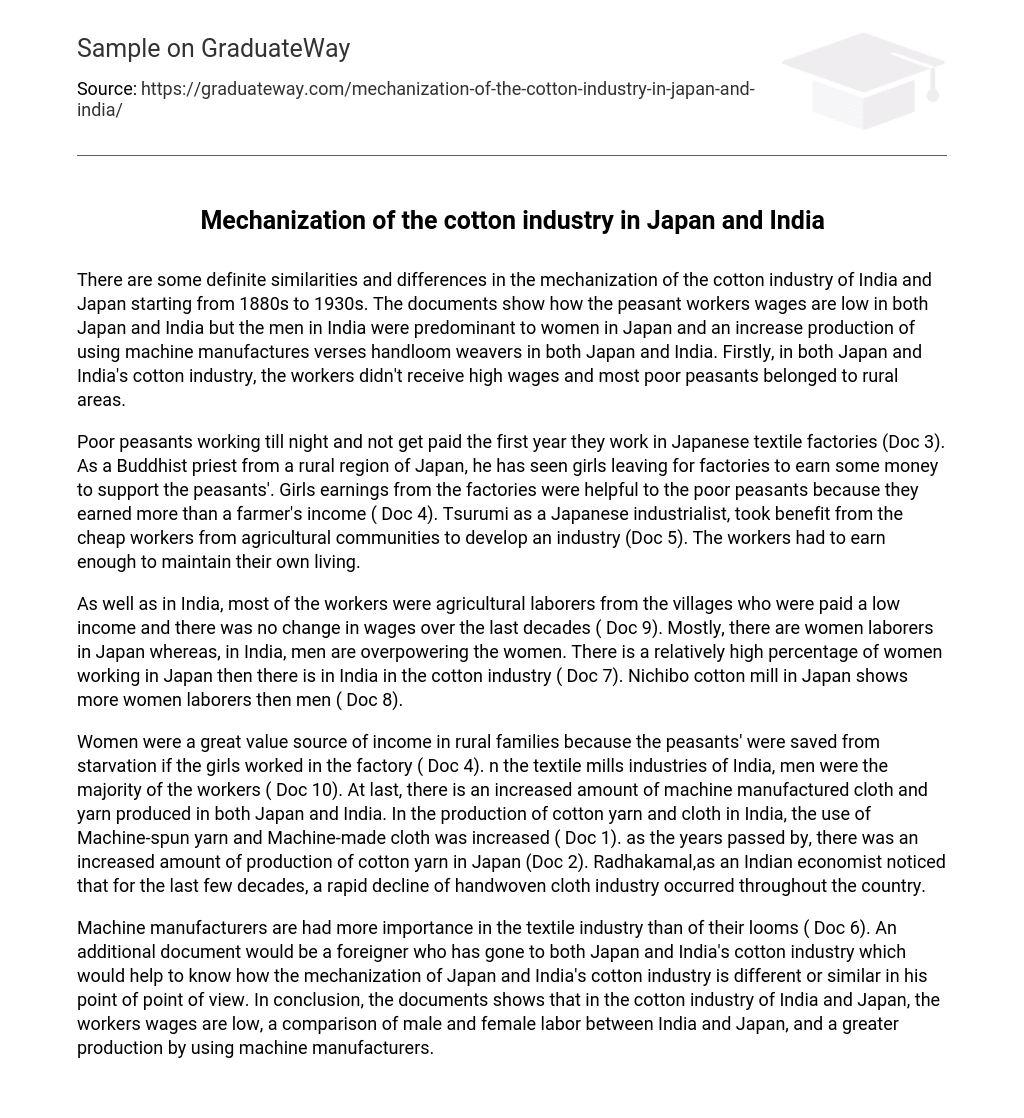There are some definite similarities and differences in the mechanization of the cotton industry of India and Japan starting from 1880s to 1930s. The documents show how the peasant workers wages are low in both Japan and India but the men in India were predominant to women in Japan and an increase production of using machine manufactures verses handloom weavers in both Japan and India. Firstly, in both Japan and India’s cotton industry, the workers didn’t receive high wages and most poor peasants belonged to rural areas.
Poor peasants working till night and not get paid the first year they work in Japanese textile factories (Doc 3). As a Buddhist priest from a rural region of Japan, he has seen girls leaving for factories to earn some money to support the peasants’. Girls earnings from the factories were helpful to the poor peasants because they earned more than a farmer’s income ( Doc 4). Tsurumi as a Japanese industrialist, took benefit from the cheap workers from agricultural communities to develop an industry (Doc 5). The workers had to earn enough to maintain their own living.
As well as in India, most of the workers were agricultural laborers from the villages who were paid a low income and there was no change in wages over the last decades ( Doc 9). Mostly, there are women laborers in Japan whereas, in India, men are overpowering the women. There is a relatively high percentage of women working in Japan then there is in India in the cotton industry ( Doc 7). Nichibo cotton mill in Japan shows more women laborers then men ( Doc 8).
Women were a great value source of income in rural families because the peasants’ were saved from starvation if the girls worked in the factory ( Doc 4). n the textile mills industries of India, men were the majority of the workers ( Doc 10). At last, there is an increased amount of machine manufactured cloth and yarn produced in both Japan and India. In the production of cotton yarn and cloth in India, the use of Machine-spun yarn and Machine-made cloth was increased ( Doc 1). as the years passed by, there was an increased amount of production of cotton yarn in Japan (Doc 2). Radhakamal,as an Indian economist noticed that for the last few decades, a rapid decline of handwoven cloth industry occurred throughout the country.
Machine manufacturers are had more importance in the textile industry than of their looms ( Doc 6). An additional document would be a foreigner who has gone to both Japan and India’s cotton industry which would help to know how the mechanization of Japan and India’s cotton industry is different or similar in his point of point of view. In conclusion, the documents shows that in the cotton industry of India and Japan, the workers wages are low, a comparison of male and female labor between India and Japan, and a greater production by using machine manufacturers.





